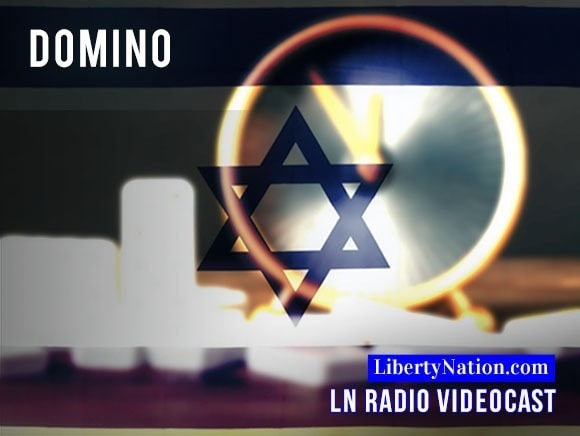**Trump’s Whirlwind Middle East Trip Aims to Cement Fragile Hope for Peace**
Former U.S. President Donald Trump’s whirlwind visit to the Middle East included a high-profile speech at the Knesset in Jerusalem and participation in a regional summit, marking a fragile moment of hope for ending over two years of conflict between Israel and Hamas.
More than two dozen countries were expected to be represented at the summit, co-hosted by Trump and Egyptian President Abdel-Fattah el-Sissi. Israeli Prime Minister Benjamin Netanyahu was invited but declined to attend, with his office citing proximity to a Jewish holiday as the reason for his absence, according to AP.
Despite lingering questions over next steps in Gaza — which has been devastated during the conflict — Trump appeared determined to seize this opportunity to foster regional stability.
—
### “You’ve Won” — Trump’s Message to Israel
Addressing Israeli lawmakers at the Knesset, which welcomed him warmly, Trump declared, “You’ve won. Now it is time to translate these victories against terrorists on the battlefield into the ultimate prize of peace and prosperity for the entire Middle East.”
He pledged U.S. support to help rebuild Gaza and urged Palestinians to “turn forever from the path of terror and violence.” Trump emphasized, “After tremendous pain and death and hardship, now is the time to concentrate on building their people up instead of trying to tear Israel down.”
Turning to Iran, Trump extended a gesture of diplomacy, stating that “the hand of friendship and cooperation is always open,” despite earlier tensions — including the U.S. bombing of three nuclear sites amid Iran’s brief war with Israel earlier this year.
—
### Summit and Hostage Release
Trump arrived in Egypt hours late after speeches at the Knesset ran longer than expected. Commenting on the delay, he joked, “They might not be there by the time I get there, but we’ll give it a shot,” teasing Israeli leaders for their lengthy speeches.
The summit coincided with the release of 20 hostages on Monday, part of an agreement aimed at ending the war that began on October 7, 2023, after Hamas killed over 1,000 Israelis. Trump met with some of the hostages’ families at the Knesset, where a woman told him, “Your name will be remembered to generations.”
Throughout his visit, Israeli lawmakers repeatedly chanted Trump’s name and gave standing ovations. Some attendees wore red hats reminiscent of Trump’s “Make America Great Again” caps, with slogans reading “Trump, The Peace President.”
—
### Netanyahu’s Praise and Trump’s Unexpected Call for Pardon
Although Netanyahu did not attend the summit, he hailed Trump remotely, calling him “the greatest friend Israel has ever had in the White House,” and vowed to collaborate closely in pursuit of peace.
“Mr. President, you are committed to this peace. I am committed to this peace. And together, Mr. President, we will achieve this peace,” Netanyahu said.
In an unexpected move during his speech, Trump called on the Israeli president to pardon Netanyahu, whom he described as “one of the greatest” wartime leaders. Netanyahu currently faces corruption charges, though several court hearings were postponed during the conflict with Hamas.
Trump also used the occasion to settle political scores by criticizing Democratic predecessors and acknowledging top donor Miriam Adelson, who was present in the audience.
—
### The Delicate Road Ahead: Gaza Ceasefire and Regional Rebuilding
Despite the ceasefire, the situation in the region remains fragile. Israel and Hamas are still implementing the initial phase of Trump’s peace plan, which includes releasing the remaining hostages held by Hamas, freeing hundreds of Palestinian prisoners held by Israel, a surge of humanitarian aid to Gaza, and a partial withdrawal of Israeli forces from Gaza’s main cities.
Trump emphasized the window of opportunity for reshaping the region and resetting strained relations between Israel and its Arab neighbors. “The war is over, OK? I think people are tired of it,” he told reporters aboard Air Force One, expressing confidence that the ceasefire would hold.
He credited his Republican administration’s strong support for Israel’s efforts against Iranian proxies like Hamas in Gaza and Hezbollah in Lebanon as key to this momentum.
The White House noted growing momentum as Arab and Muslim states increasingly focus on resolving the broader Israeli-Palestinian conflict, with some deepening ties with the U.S.
—
### Vision for Gaza’s Future: From “Demolition Site” to Rebuilding
Back in February, Trump predicted Gaza could be redeveloped into what he called “the Riviera of the Middle East.” However, during his recent trip, he was more cautious.
“I don’t know about the Riviera for a while. It’s blasted. This is like a demolition site,” Trump said. He expressed hope to visit Gaza one day, saying, “I’d like to put my feet on it, at least.”
The parties have yet to agree on Gaza’s postwar governance, reconstruction, and Israel’s demand that Hamas disarm. Negotiations remain delicate, and Israel has indicated it may resume military operations if its demands are not met.
Much of Gaza remains in ruins, and its roughly 2 million residents continue to face desperate humanitarian conditions.
—
### Ceasefire Enforcement and Humanitarian Aid
Under the ceasefire deal, Israel has agreed to reopen five border crossings, easing the flow of food and supplies into Gaza, where parts of the population are experiencing famine.
Approximately 200 U.S. troops will assist in monitoring the ceasefire, working alongside partner nations, non-governmental organizations, and private-sector players to help stabilize the situation.
—
Trump’s trip underscores a critical juncture for peace efforts in the Middle East, carrying both cautious optimism and the weighty challenge of rebuilding a war-torn region. The coming weeks and months will reveal whether this fragile hope can be transformed into lasting peace and prosperity.
https://www.mid-day.com/news/world-news/article/gaza-ceasefire-trump-reaches-egypt-urges-israel-to-seize-ultimate-prize-for-peace-and-prosperity-23598540
